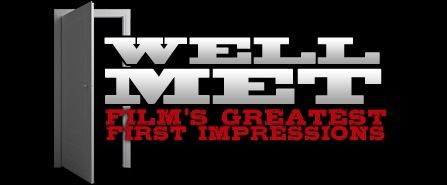
There are endless cliches out there about the importance of a first impression, but whatever truth they may hold in our everyday lives they go double for film. When there’s only a couple of hours to tell a story and capture its players, an audience’s first chance to meet a character is an asset no filmmaker worth their salt is going to waste. So with that in mind, CHUD is going to take a look through the many decades of cinema to extract the most special of those moments when you are first introduced to a character, be they small moments that speak volumes, or large moments that simply can’t be ignored.
Inevitably it will be the major characters and leads that are granted the grandest of entrances, but don’t be surprised to see a few supporting players and minor individuals get their due, when the impact of their appearance lingers longer than their screentime. Also know that these moments may be chosen for any number of reasons, and the list could never be exhaustive. But here you’ll find moments that make a big splash, say a lot with a little, or we think are just particularly cool.
We hope you enjoy, and can’t wait to hear from you about each and every entry. Don’t spend the effort guessing future choices or declaring what must be included– just enjoy the ride!
————————
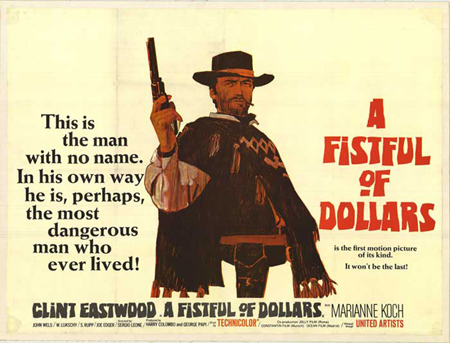
The Film… A Fistful of Dollars (1964)
Director… Sergio Leone
Entering From Stage Left … Clint Eastwood in the role of The Man With No Name (aka “Joe”)
What Makes It Special … The sneer. The squint. The blinding sun. The serape. The body count. The music.
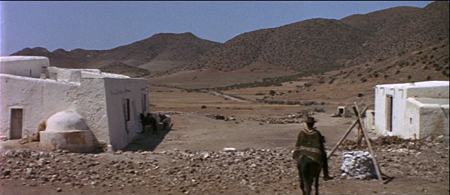
Mysterious strangers riding into dusty and sad little towns were a staple of Westerns long before Sergio Leone decided to remake Yojimbo. And they were usually strong and silent types. But none of them were quite so cold, callous and disinterested as this one.
At first glance, Joe seems pretty down on his luck. His clothes are a pretty motley assortment, there’s already a bullet hole in his hat, and he’s riding a mule. He emerges from a rocky landscape, back to us, trotting towards what we have to imagine is a very welcome watering hole. And there he lingers, sipping on aqua, watching the odd sight of a little kid running, sobbing, and beating his little fists against an adobe house. Joe is amused by this. And then two banditos come out of said house, and begin beating, kicking, and shooting at the boy. His father comes out, scoops him up, and promptly gets a beating of his own.
Now, here’s where Gary Cooper, John Wayne, Jimmy Stewart, or Randolph Scott would have intervened. You can practically hear Wayne drawl something to the effect of “Hey now, pilgrim, why don’t you come and pick on someone your own darn size?” But not Joe. There’s disgust on his face, but he doesn’t even pull out his pistol. He just watches, sizing it all up, taking extra time to ogle the pretty lady in the window who is clearly the cause of it all.
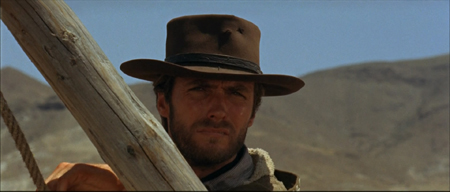
The thugs notice they’ve got a visitor. They turn their attention on him. Joe quickly wipes the mulish disapproval off his face, and makes a point of taking another leisurely sip. “Oh, no trouble from me, friends. Don’t mind me. Just passing through.”
If John Wayne happened to the same well at this moment, he’d probably call him a yellow-bellied cowardly scoundrel. The green-eyed lass at the window certainly has no time for him. His smile isn’t returned. She stares him down, clearly saying what the audience is thinking: “You’re an asshole.”
Joe shrugs — “Yeah, so?” — and continues his ride into town.
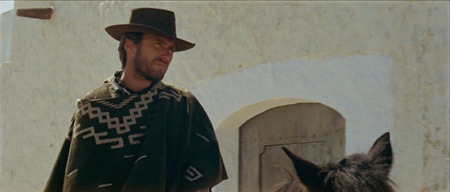
Those flinty eyes don’t miss a beat, though. Something isn’t quite right with this little speck of humanity. There’s a rather ominous noose hanging at the gates. The coffin-maker seems to have a brisk trade. No citizen will make eye contact with him; they hurry inside and shut their curtains or shutters. A dead body, tied to his horse, rides by with an “Adios, Amigo” sign on his back.
Joe doesn’t seem particularly worried. He tips his hat to the riding dead and moves on. His silent progress is finally stopped by three snappy thugs, who sneer at his lanky frame and his shaggy pony. They call him a coward, shoot at the hooves of poor said pony, and leave him dangling from a cantina sign. He speaks his first word to the cantina owner: “Hello.” He drops to the ground, shrugs his serape back into place, and goes inside for a drink.
Is this guy a coward? You’d be forgiven for thinking he was. But he’s a rattlesnake, flicking his tail, waiting to strike. He just takes his time about it. Joe sits down, has a meal, finds out the tragedy of the town, and decides to introduce himself to the place properly. There’s three men who need to apologize to his mule…
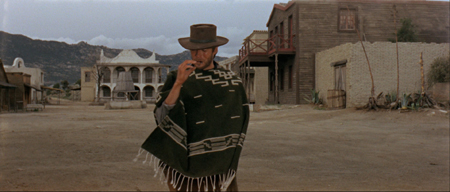
“You see, that’s what I want to talk to you about. He’s feeling real bad. My mule. You see, he got all riled up when you men fired those shots at his feet. See, I understand you men were just playin’ around, but the mule, he just doesn’t get it. Course, if you were to all apologize…”
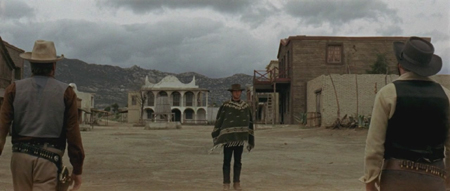
And now, fifteen minutes in, we meet the real Joe. The menacingly jovial figure glances down, flips up the edge of his serape, and looks back up. Joe is no longer the “Just passing through, officer!” man at the well. Joe is a man who is mad, bad, and dangerous to know. He fixes the three (my mistake, four) hired guns with an icy glare, and clenches his jaw around his cigarillo.
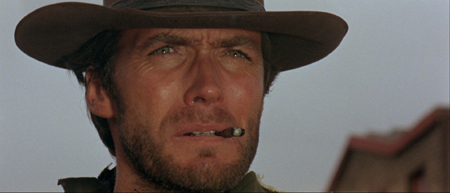
“I don’t think it’s nice. You laughing.”
Bang, bang, bang, bang. And then he turns his back on John Baxter, the boss of these men, and a convenient sheriff. No fear of being shot in the back, just contempt for the man who’d do it, and that alone is chilling enough for Baxter to lower his pistol. Meet the Man with No Name, everybody!
Why It Resonates… It’s the loping pace, and the gestures both great and small that neatly turned a genre on its head. Who could have predicted a single flip of a serape could be so electrifying? We’d seen the quick draw, the coat flip, and the hand hovering over a pistol. These things were cool. There is nothing intrinsically cool about a poncho, and yet on this character, it becomes the edgiest garment the West had ever seen.
Leone drags this introduction out, reworking this character in every frame, trying to shake up your opinion of him. What kind of man watches a child being shot at? The same kind of man who lets others shoot at him. Yet fifteen minutes later, we know exactly who he is. This is a man who you don’t want to mess with. Though we don’t know when or how, we know those child-beating banditos have another thing coming to them and the entire godforsaken town is going to burn. We sense he sized it up with every step he took. Every animal bites, and this one’s just biding his time in order to deliver a little more venom. (And get a bigger meal out of it. This snake does nothing by halves.)
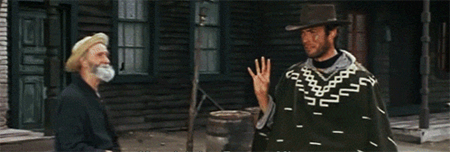
It’s also the rare gem that made both actor and character an icon. Clint Eastwood was just the young whippersnapper on Rawhide. He was so unknown they didn’t bother to accurately portray his face on the first posters. They sold it on the pure basis of the idea of this character. And in a strange and magical fashion, it still works that way. Whenever you watch it, the sheer history of Eastwood’s career falls away. He’s just The Man With No Name, a man you’ve never met before, and yet a figure who resonates from the moment his thin, burned visage appears onscreen. Somehow, you’ve always known him. That’s what an iconic character is, after all, the murky figure who was watching you from the corner, waiting, wondering if you’d notice…
Other Grand Entrances … Not particularly, though there’s some flashy and dramatic exits by other characters. This is Eastwood’s movie all the way. One might even say it’s a movie just full of him entering and exiting the scene ever more memorably. And that’s just fine.
![]()
Day 3: Groucho Marx (Duck Soup)
Day 4: Jackie Gleason (The Hustler)
Day 5: Orson Welles (The Third Man)